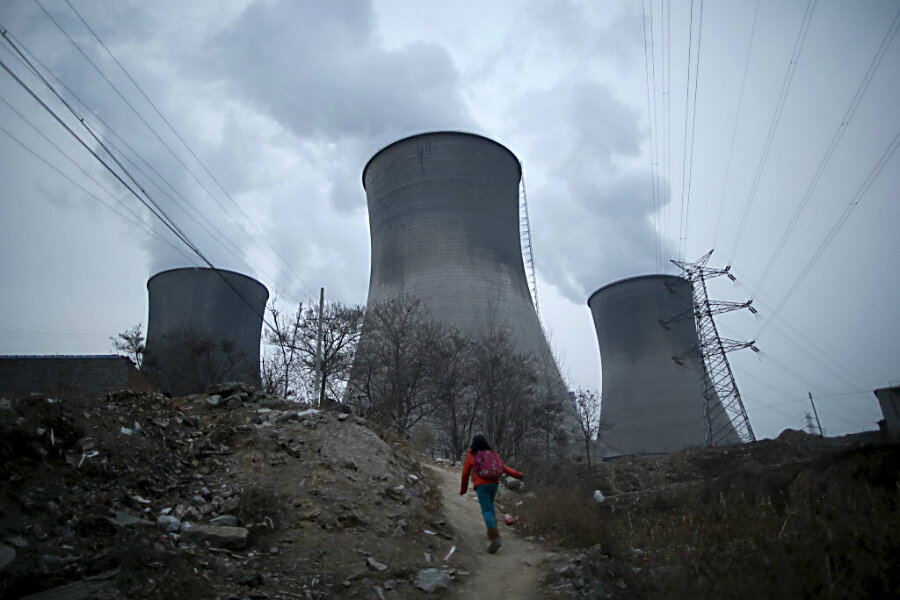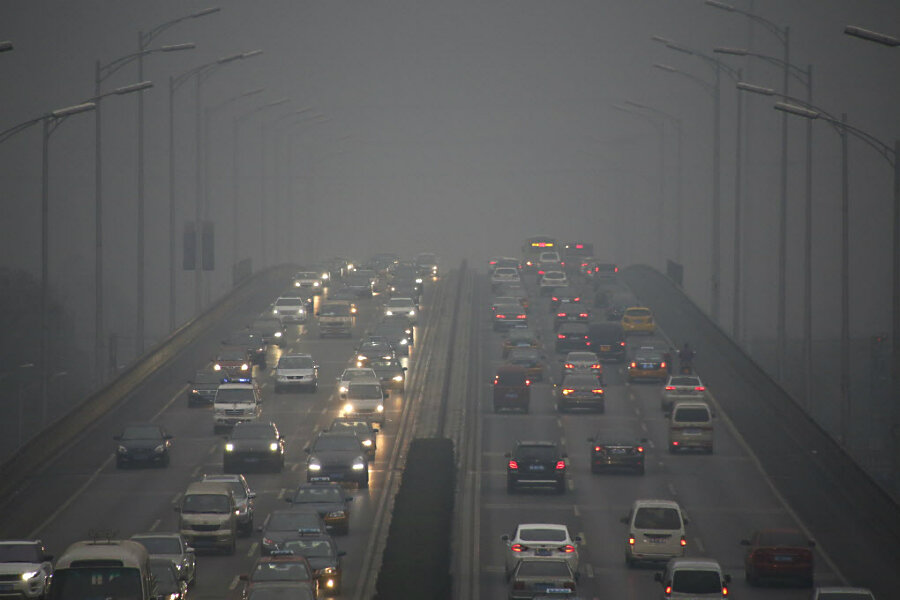How China's carbon emissions could be driving a low in global emissions
Loading...
The global carbon dioxide emissions from fossil fuels and industry for this year are projected to show a slow down, or even decline, in the global warming-inducing greenhouse gas emissions.
Researchers found that carbon emissions may show a decline by 0.6 percent for 2015, a marked departure from the annual increase of 2.4 percent seen in the past decade, according to new research published Monday in the journal Nature Climate Change.
China's new emissions policies seem to be the driving force of this progress. The nation is moving away from coal as a fuel source and toward more renewable options. In September, China announced a new cap-and-trade system to reduce greenhouse gas emissions.
As the world's biggest carbon emitter, the changes China makes could have great influence over these global emissions rates.
Still, this decline in emissions is likely just a momentary reprieve.
"The break has to do with China’s economic instability," study co-author Corinne Le Quéré, director of the Tyndall Centre for Climate Change Research at the University of East Anglia in Norwich told Nature News. "It’s unlikely to be a peak of emissions. A lot of emerging economies are based on coal, and in just a few years emissions are going to go up really rapidly."
"Time will tell whether this surprising interruption in emissions growth is transitory or a first step towards emissions stabilization," the authors write.
The dip in global emissions rates comes from available data from energy reports put out by the countries. As such, the carbon emissions rates could be down by as much as 1.6 percent or up by 0.5 percent for 2015, the authors say.
These results emerge as China's capital, Beijing, is on its first "red alert" for smog, a highly visible illustration of the fact that China's battle with pollution is far from won. The alert means the government sees air pollution as too hazardous for people to be moving around outside. The government announced Monday night that schools and factories would be closed, and measures would be taken to limit automobile traffic through noon on Thursday.
The New York Times' Edward Wong compared a Tuesday afternoon stroll through the city to walking through a coal mine. At 4 p.m. Tuesday afternoon, the municipal air quality index read 308, a level considered hazardous in the United States.
Mr. Wong's comparison to the air quality of a coal mine might not be so far off, as much of China's pollution comes from industrial coal burning.
It's the new policies to curb such coal consumption that the new study's authors say is greatly reducing this year's global carbon emissions.
"China is trying to deal massively with its air pollution problem," Dr. Le Quéré told Nature News.









